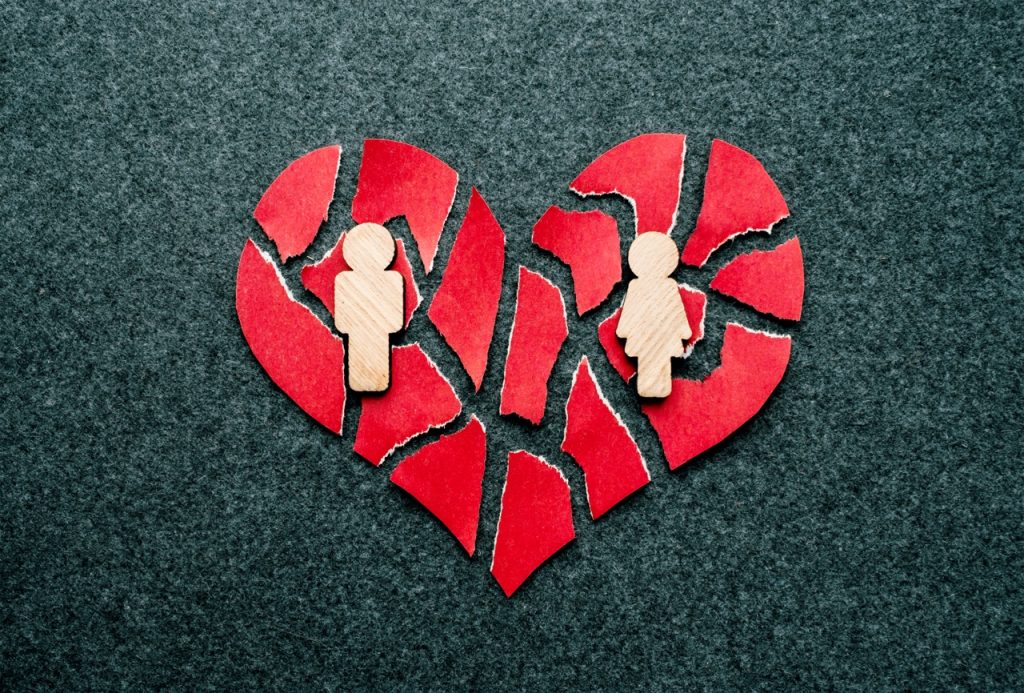- Attorney Appointment (916) 704-3009
Can You Serve Divorce Papers By Mail in California? (Complete Guide)

Understanding Your Options for Serving Divorce Documents
If you’re starting the divorce process in California, one of your first questions might be: “Can I just mail these divorce papers to my spouse?” The answer isn’t a simple yes or no—California has specific requirements about how legal documents must be delivered to ensure your divorce case proceeds smoothly.
In this comprehensive guide, we’ll explore when you can (and can’t) serve divorce papers by mail in California, alternative service methods, and the critical steps to ensure your divorce documents are properly served according to California law.
The Importance of Proper Service in California Divorce
Before diving into mail service, it’s important to understand why proper service of divorce papers matters so much in California.
Did You Know? Until your spouse is properly served with divorce papers, your case cannot move forward—even if you’ve already filed all the necessary forms with the court.
Serving divorce documents isn’t just a formality. It’s a legal requirement that:
- Officially notifies your spouse that divorce proceedings have begun
- Triggers their response timeline (typically 30 days)
- Establishes the court’s jurisdiction over your divorce case
- Protects your spouse’s due process rights
If your divorce papers aren’t properly served according to California’s legal requirements, your entire case could be delayed or even dismissed.
Can You Serve Divorce Papers by Mail in California?

Yes, under certain circumstances, you can serve divorce papers by mail in California—but there are strict rules about when this service method is allowed and how it must be done.
Regular Mail is NOT Sufficient
First, let’s be clear about what doesn’t work: You cannot simply put your divorce petition in an envelope, add a stamp, and drop it in a mailbox. Regular first-class mail is never sufficient for serving initial divorce papers in California.
When Mail Service IS Allowed in California
California allows service of divorce papers by mail in these specific situations:
- Service by Certified Mail with Return Receipt Requested
- Only available if your spouse lives outside California
- Must be signed for by your spouse personally
- You must file proof of service showing their signature
- Service by Notice and Acknowledgment of Receipt (Form FL-117)
- Works for spouses both in and outside California
- Your spouse must voluntarily sign and return the acknowledgment form
- The clock starts ticking on their response only when they sign
- Service by Mail After Substituted Service
- Used when personal service attempts have failed
- Involves leaving documents with someone at your spouse’s home or workplace
- Then mailing a second copy to the same address
Case Example: In Marriage of Nurie (2009) 176 Cal.App.4th. 478, the court held that improper service by mail without following statutory requirements did not give the court jurisdiction, resulting in the divorce judgment being vacated even years after it was entered.
Step-by-Step: Serving Divorce Papers by Notice and Acknowledgment

The most common way to serve divorce papers by mail in California is using the Notice and Acknowledgment method. Here’s how it works:
1. Prepare Your Divorce Documents
You’ll need to include:
- Summons (Form FL-110)
- Petition (Form FL-100)
- Other required forms based on your situation (property declaration, etc.)
- BLANK Notice and Acknowledgment of Receipt (Form FL-117)
- BLANK Response form (Form FL-120)
2. Mail the Documents
- Send all documents by first-class mail
- Include two copies of the Notice and Acknowledgment form
- Include a self-addressed stamped envelope
- Only the person filing for divorce (or their attorney) can mail these documents
Did You Know? Unlike with personal service, you (the petitioner) can actually mail the documents yourself—no third party is required for this step.
3. Wait for Your Spouse to Sign and Return
- Your spouse must sign and return the Acknowledgment within 20 days
- The 30-day response period begins when they sign the Acknowledgment
- If they don’t return it, this method has failed
4. File the Proof of Service
Once your spouse signs the Acknowledgment:
- File the signed Notice and Acknowledgment with the court
- This form serves as your proof of service
- Keep a copy for your records
Warning: If your spouse doesn’t sign and return the Acknowledgment within 20 days, this service method has failed. You’ll need to use personal service or another alternative method.
What Happens If Mail Service Fails?
If your spouse doesn’t sign and return the Acknowledgment of Receipt, or if certified mail service fails because they refuse to sign, you’ll need to use an alternative service method:
1. Personal Service
The most reliable method is personal service, which means:
- A process server, friend, relative (over 18), or county sheriff personally hands the documents to your spouse
- The server completes a Proof of Service of Summons (Form FL-115)
- You file this proof with the court
Did You Know? Personal service is the preferred method for serving divorce papers in California and is required in most situations.
2. Substituted Service
If personal service attempts fail after reasonable diligence:
- Documents can be left with someone 18+ at your spouse’s home or workplace
- A copy must also be mailed to that same address
- The server completes the Proof of Service form
- This requires a court filing explaining why personal service wasn’t possible
3. Service by Publication or Posting
As a last resort, when you cannot locate your spouse:
- Court permission is required first
- Notice published in a local newspaper (publication)
- Or posted at the courthouse (posting, for those who can’t afford publication)
- This method is time-consuming and expensive
Case Example: In Marriage of Harris (2004) 34 Cal.4th 210, the California Supreme Court emphasized that service by publication requires “reasonable diligence” in attempting to locate the spouse, including checking with family, friends, employers, and public records.
FAQ: Common Questions About Serving Divorce Papers in California
Can I email divorce papers to my spouse in California?
No, electronic service of initial divorce papers is not permitted in California unless your spouse has already appeared in the case and agreed to accept electronic service.
What if my spouse is avoiding service?
If your spouse is deliberately avoiding service, you should:
- Hire a professional process server
- Document all service attempts
- Apply for court permission to use substituted service
- In extreme cases, ask for service by publication
Can I serve divorce papers if my spouse is in jail?
Yes. Inmates can be served through the jail administrator. Contact the specific facility for their procedures.
What if my spouse lives in another country?
International service follows different rules depending on the country. The Hague Service Convention applies to many countries. Consult with a family law attorney for international cases.
Can I get a default judgment if my spouse never responds?
Yes. If your spouse is properly served but doesn’t respond within 30 days, you can request the court to enter default and potentially receive judgment on the terms requested in your petition.
How long do I have to serve divorce papers after filing?
You must serve the divorce petition within 60 days of filing. If you don’t, your case might be dismissed, though extensions are possible for good cause.
Special Circumstances in California Divorce Service
Military Spouses
Serving divorce papers to an active-duty military spouse follows special rules:
- The Servicemembers Civil Relief Act provides protections
- On-base service may require commanding officer permission
- In some cases, certified mail to their commanding officer is acceptable
Spouses Who Live Outside California
When your spouse resides outside California:
- Certified mail with return receipt is an option
- California service rules still apply (not the rules of their state)
- International service has additional requirements
Safety Concerns (Domestic Violence)
If you have safety concerns:
- Consider hiring a professional process server
- Request address confidentiality if applicable
- Discuss safety planning with your family law attorney
- Restraining orders may be filed simultaneously
Did You Know? In domestic violence cases, California courts may allow alternative service methods to protect your safety.
Related Terms: formal process, critical document, spousal support, legal actions, top portion
Common Mistakes to Avoid When Serving Divorce Papers
1. DIY Service Errors
Many self-represented litigants make critical mistakes:
- Having the wrong person serve the documents
- Not including all required forms
- Failing to complete the proof of service correctly
- Not filing proof of service with the court
2. Improper Mail Service
Mail service mistakes include:
- Using regular mail instead of the proper method
- Not including the Notice and Acknowledgment form
- Failing to follow up when the form isn’t returned
- Not keeping tracking information or receipts
3. Procedural Timing Errors
Timing issues can derail your case:
- Missing the 60-day service window after filing
- Not allowing enough time for mail delivery
- Failing to file proof of service promptly
- Not accounting for holidays and weekends in deadlines
The Role of Family Law Attorneys in the Service Process
While you can handle service yourself, a family law attorney can:
- Ensure all documents are correctly prepared
- Advise on the best service method for your situation
- Arrange for professional process servers when needed
- Handle complications and alternative service requests
- Ensure proper proof of service is filed with the court
Pro Tip: Many family law attorneys offer a free consultation to discuss your specific situation, including advice on serving divorce papers.
California Counties May Have Additional Requirements
Each California county may have specific local rules about service:
- Some counties have additional local forms
- Document formatting may vary
- Filing procedures can differ
- County-specific fee waiver processes
Check with your specific county’s Superior Court website or family law facilitator for any additional local requirements regarding service.
Real-World Examples: When Mail Service Goes Wrong
Case Study 1: The Uncooperative Spouse
Maria sent her divorce papers using the Notice and Acknowledgment method. Her husband received them but refused to sign and return the acknowledgment. After 25 days, she had to hire a process server for personal service, delaying her case and adding expenses.
Lesson: Have a backup plan ready if your spouse is unlikely to cooperate with mail service.
Case Study 2: The Missing Return Receipt
John served his wife by certified mail since she lived in Nevada. When filing his proof of service, he discovered he had lost the return receipt showing her signature. The court rejected his proof of service, forcing him to serve the documents again.
Lesson: Keep all receipts, tracking information, and service documents in a safe place.
Case Study 3: The Incomplete Service Package
Sara mailed her divorce petition to her husband using the Notice and Acknowledgment method but forgot to include a blank copy of the Response form. Even though her husband signed and returned the acknowledgment, the court later determined the service was defective.
Lesson: Create a checklist of all required documents before mailing anything.
Step-by-Step Timeline of the California Divorce Process
Understanding where service fits in the overall divorce process helps clarify its importance:
- File the Petition and Summons with the court
- Serve the documents on your spouse
- Wait for response (30 days from proper service)
- Exchange financial disclosures (Preliminary and Final Declarations of Disclosure)
- Negotiation or litigation of unresolved issues
- Judgment finalizing the divorce
The clock on your divorce case starts ticking only after proper service is completed and documented.
Final Thoughts: Choosing the Right Service Method
When deciding how to serve divorce papers in California, consider:
- Your relationship with your spouse (amicable or contentious?)
- Your spouse’s likely cooperation with the process
- Time constraints and urgency
- Geographic location of both parties
- Safety concerns or special circumstances
- Budget considerations
While mail service can be convenient in the right circumstances, personal service remains the gold standard for ensuring your California divorce proceeds without procedural hiccups.
Remember: Proper service isn’t just a technical legal requirement—it’s the foundation that ensures your divorce process can move forward smoothly. Taking the time to get it right from the beginning can save you significant time, money, and stress later.
This article provides general information about California divorce law as of 2025 but should not be considered legal advice for your specific situation. Always consult with a qualified family law attorney about your particular circumstances.
Related Terms: legal procedures, serving papers, child custody, legal proceeding, divorce notice , court hearing, hiding assets, important documents, crucial step, basic information, potential complications













